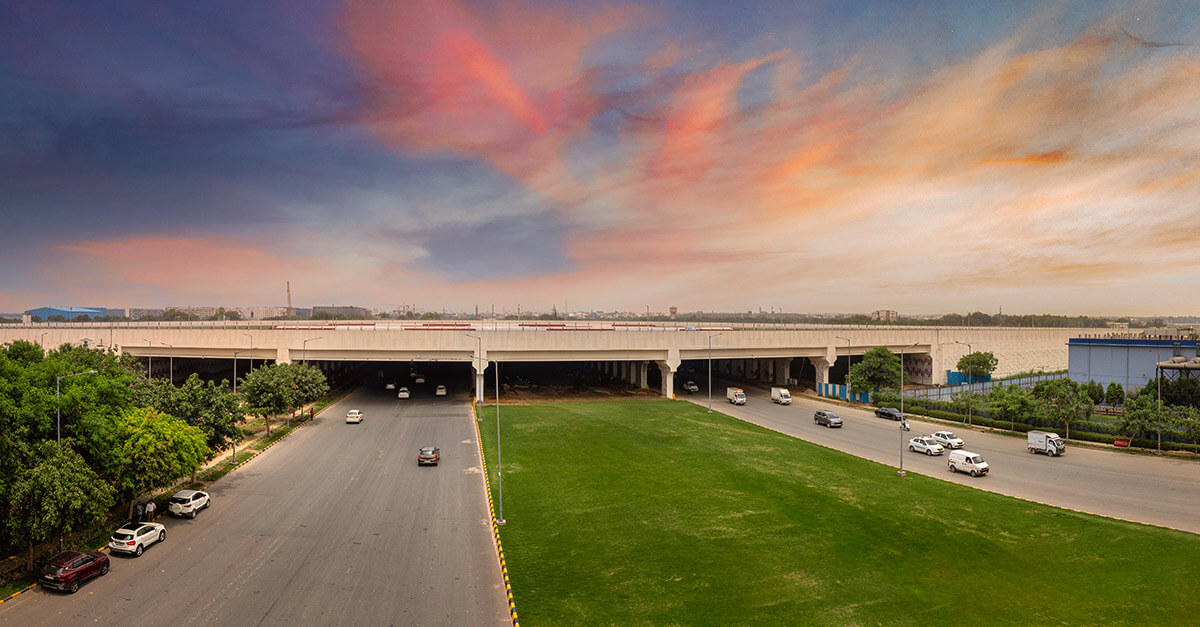
The Indira Gandhi International (IGI) Airport is one of the largest and busiest airports in the world. Managed and operated by DIAL, Delhi Airport is consistently working to build a sustainable future while improving passenger experience.
In its latest attempt to meet sustainable development goals, Delhi Airport is all set to introduce first-of-its-kind elevated dual taxiway connecting the Northern and Southern airfields on the eastern side of the airport.
The elevated taxiway will lessen taxiing distances for aeroplanes, reduce aircraft emissions, save natural resources such as ATF, and enhance operational efficiency. It will also improve passengers’ experience, as they will remain inside a plane for a shorter duration after landing or during take-off.
Here is all you need to know about this latest development at Delhi Airport!
Sustainable development is the key to building a better present and livable future. The aim is to use natural resources wisely so as to reduce the negative impact on the environment.
At Delhi Airport, environmentally sustainable development is an integral part of the business strategy. In line with its mission to create a sustainable future, DIAL aims to become a Net Zero Carbon Emission Airport by 2030.
To fulfil this ambition, DIAL has initiated several key infrastructure development projects. One of these initiatives is the development of the Eastern Cross Taxiway (ECT).
One-of-its-kind taxiway at the eastern end of the IGI Airport, the ECT is a 2.1 km long and 202 m wide elevated dual-lane taxiway connecting the Northern and Southern airfields. It will reduce the distance an aircraft needs to cover after landing on the third runway to reach T1 from the present 9 km to 2 km.
The taxiway forms an elevated bridge over Central Spine Road, which connects Mahipalpur and T3. It can handle large aircraft and wide-body jets such as A380, B777, and B747-8.
Each of the two lanes of the elevated taxiway is 44 m wide with a gap of 47 m between them to allow safe simultaneous passage of two big aircrafts. With a massive monolithic spine structure comprising 156 piers, it can maintain structural integrity even in the case of an explosion.
The ECT is constructed using fly ash, a waste product of coal-fired power plants, in the filling material. It is an environment-friendly measure to promote waste re-utilisation and ensure that other raw materials used in construction can be reduced, thereby making the construction process environment-friendly.
The inauguration of the elevated dual taxiway will reap many benefits, including:
The Delhi Airport is soon going to inaugurate the first-of-its-kind dual taxiway, connecting Northern and Southern airfields in India. By reducing the distance an aircraft needs to cover after landing on the third airway and going to T1, the ECT will enhance the flyer experience and decrease CO2 emissions by a significant amount. After its inauguration, Delhi Airport will become the only Indian airport to have an elevated taxiway with roads passing below it.

